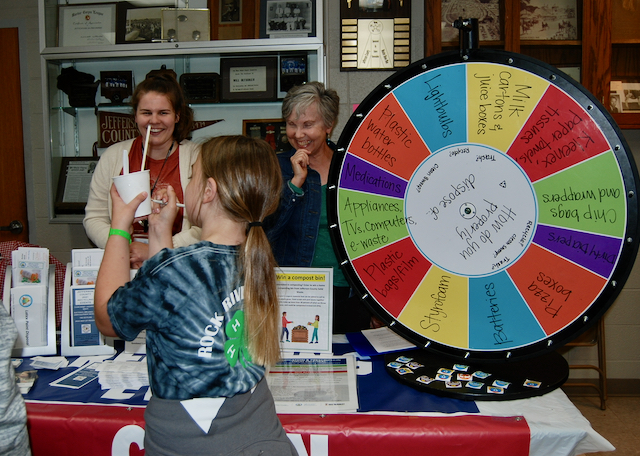By Anita Martin
As the weather starts warming and we’re working more outside, it’s time to dust off, and start donning, the gardening gloves and work gloves.
Why? Because fungus is among us. What fungus are we talking about here? Sporothrix fungi, which is found on hay, sphagnum moss, peat, decaying wood, and soil.
Sporotrichosis infection, also known as “rose gardener’s disease” or “rose handler’s disease,” can arise after contact with contaminated plant matter. Folks working in forestry, tree nurseries, and garden centers, and people who handle hay bales or play by hay bales are most at risk of developing this fungal disease.
People contract sporotrichosis by coming in contact with the fungal spores in the environment. Skin infection is the most common result from the fungus entering skin through a small cut or scrape after someone touches contaminated plant matter. Symptoms of human infection typically include skin lesions (cutaneous or lymphocutaneous lesions), and there also may be ocular (eye) involvement as the result of fungal spread by rubbing or touching an eye or eyes.
The initial sign of trouble is typically a small, painless bump that develops one to 12 weeks after exposure to the fungus. The bump can be red, pink, or purple, usually on the finger, hand, or arm. Over time, the bump grows larger and often looks like an open sore or a slow-healing ulcer.
If the fungal infection spreads to other parts of the body, such as the bones, joints or central nervous system, the situation becomes more serious. Pulmonary (lung) sporotrichosis is considered rare and results from breathing in fungal spores. Symptoms include cough, shortness of breath or chest pain. In cases of disseminated sporotrichosis, stemming from infection spread to the bone, they can sometimes be mistaken for rheumatoid arthritis.
People with existing health problems or those taking certain medicines which lower the body’s ability to fight germs and illness are more at risk. The severe forms of the fungal infection usually affect folks with weakened immune systems or long-term diseases like diabetes, pulmonary disease, alcoholism, etc.
Cats and other mammals may also be exposed to the fungus through contact with plant matter, explained Ian Hennessee, Ph.D., MPH earlier this month as he discussed sporotrichosis on the CDC’s ZOHU (Zoonoses and One Health Updates) webinar.
As Epidemic Intelligence Service Officer in the Division of Foodborne, Waterborne and Environmental Mycotic Diseases Branch at the Centers for Disease Control and Prevention (CDC), Hennessee said Sporothrix brasiliensis (some of these words are really a mouthful) is easily transmitted by cats, strays or felines spending time outdoors.
A link to Hennessee’s discussion in here: https://www.cdc.gov/onehealth/zohu/2023/march.html.
The illness can be transmitted between cats as they fight, and also from cats to humans and dogs, through bites, scratches, contact with lesions, droplet exposure (sneezing), and inhalation. Cats with sporotrichosis frequently have lesions on their faces, especially around their nose.
Cat-transmitted sporotrichosis in humans and/or felines has been spreading rapidly in Brazil, and in recent years, more cases are being reported throughout most of South America.
The United Kingdom reported the first three human cases of this illness, which researchers say stemmed from a cat brought to the country from Brazil three years prior. Some forms of sporotrichosis tend to have a long incubation period.
On U.S. soil, a resident in Boston, Mass., reportedly contracted a case of S. schenckii (a different strain) after handling a sick cat while traveling in Brazil.
The CDC’s message to veterinarians, clinicians, microbiologists, epidemiologists, and border health personnel is that a “one health” approach is needed. “Think Fungus. Save Lives,” the campaign materials read. “Some fungal infections look like other illnesses. Early diagnosis and proper treatment are essential.”
Steps to your lower chances of developing sporotrichosis:
• Wear protective clothing such as gloves and long sleeves when touching plant matter, such as rose bushes or other bushes with thorns, that can cause minor cuts and scrapes, also hay bales and soil.
• Be careful with unfamiliar animals, particularly cats. In the U.S., the fungus is most often spread by stray cats and pet cats that go outdoors.
• Avoid touching your eyes if you’ve touched a potentially-infected cat exhibiting lesions.
To learn more, check out the following sources:
https://www.cdc.gov/fungal/diseases/sporotrichosis/brasiliensis.html
https://www.cdc.gov/fungal/diseases/sporotrichosis/index.html#
Anita Martin is a longtime freelance journalist whose work has appeared in such publications as the Waterloo/Marshall Courier, The Madison Times, Agri-View, Dane County Lifestyles (formerly 50 Plus Lifestyles newsmagazine), Verona Press and Wisconsin Woman magazine, covering such topics as health and wellness, and women’s and multicultural issues. More recently, she has developed interest in such topics as environmental issues, avian influenza and other zoonotic diseases, and public health.

Anita Martin, at right, volunteers in 2021 at the Jefferson County Clean Sweep booth at the Jefferson County Fair. File photo/Kim McDarison.
This post has already been read 742 times!